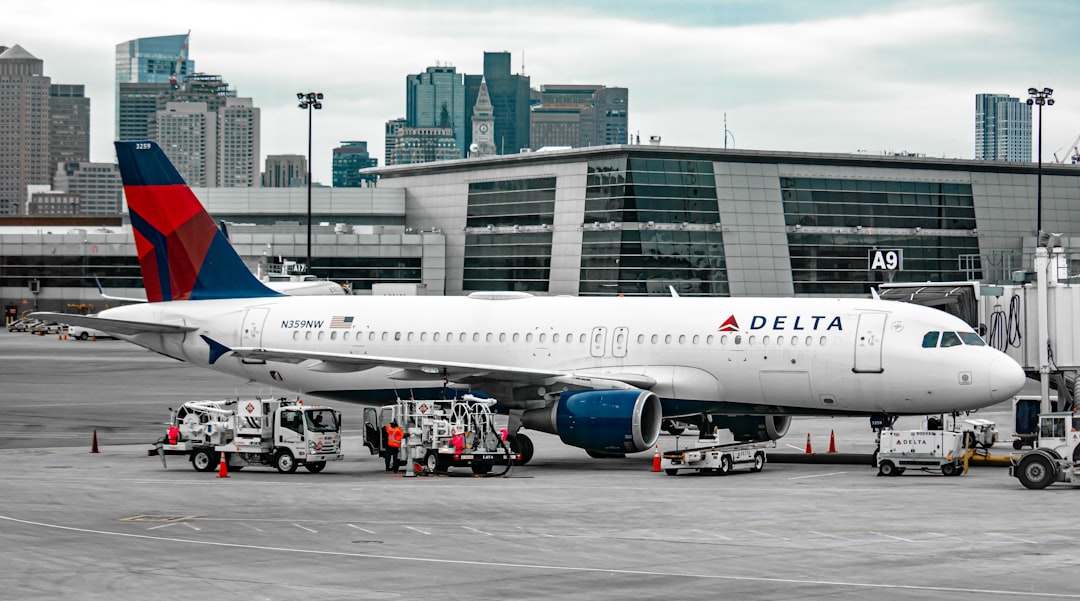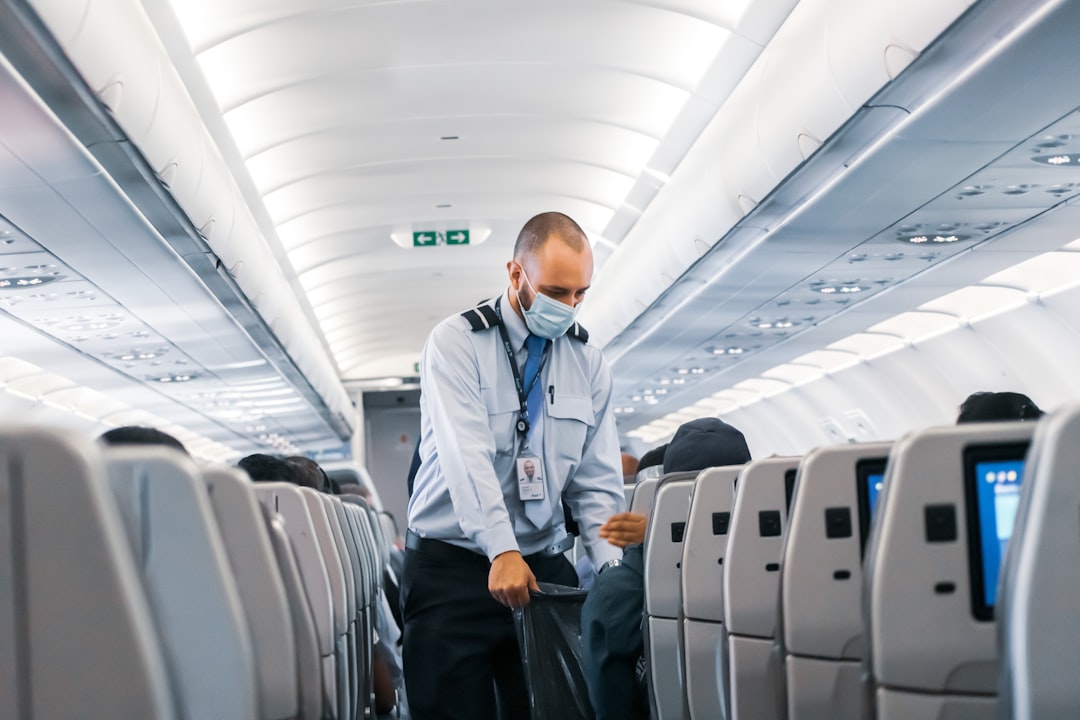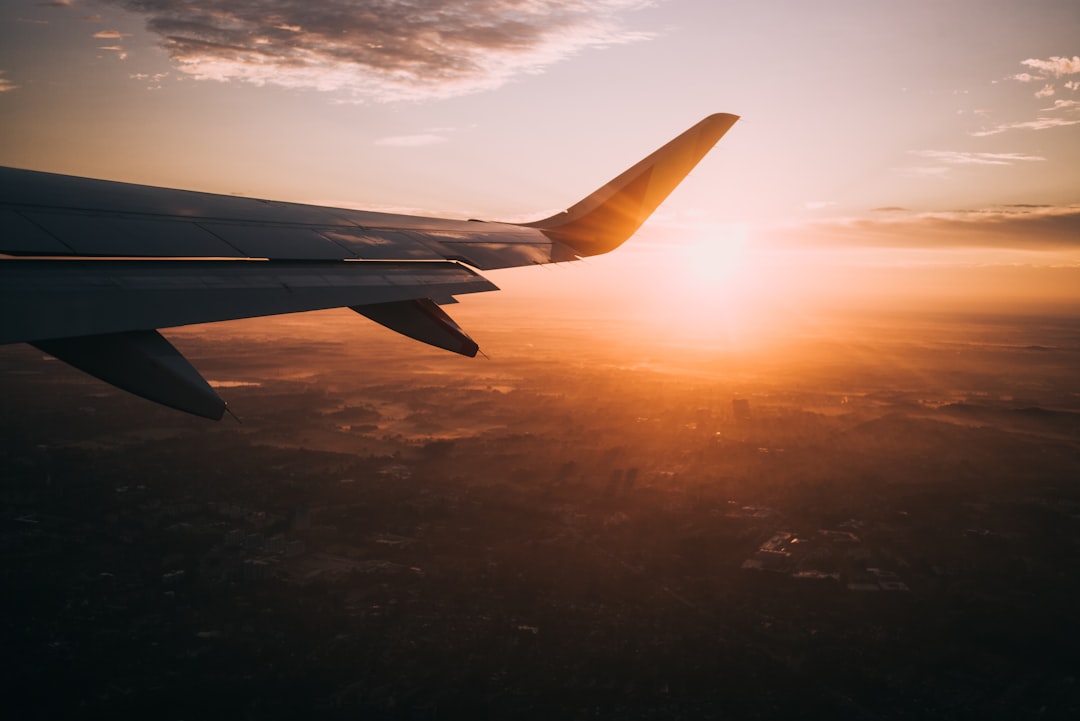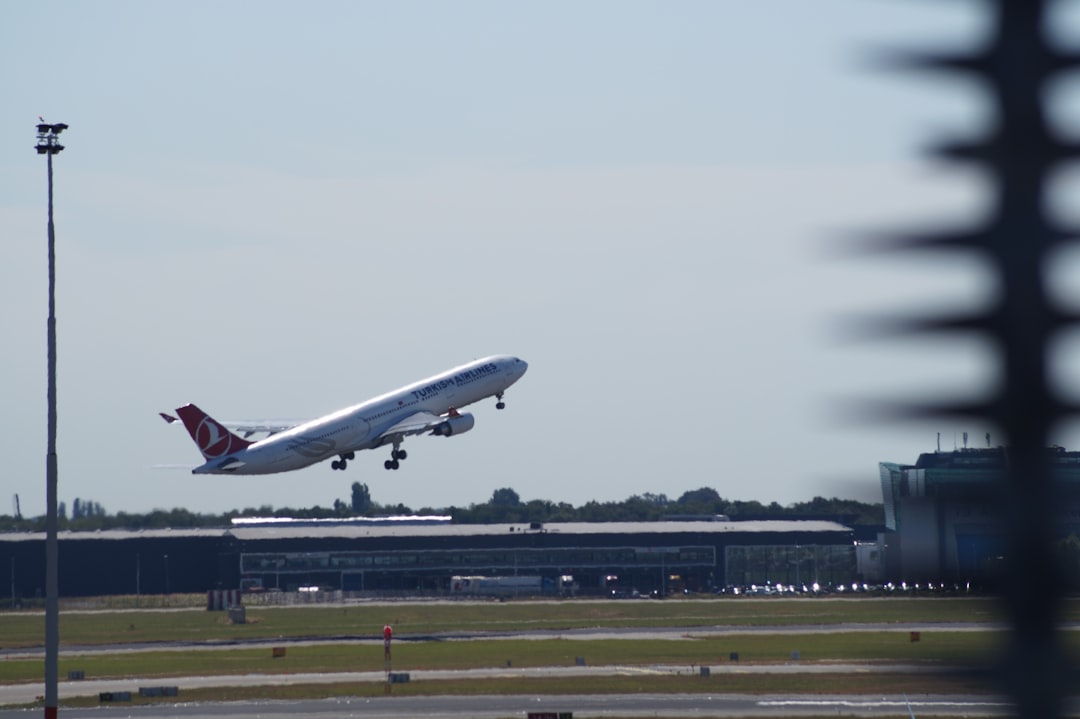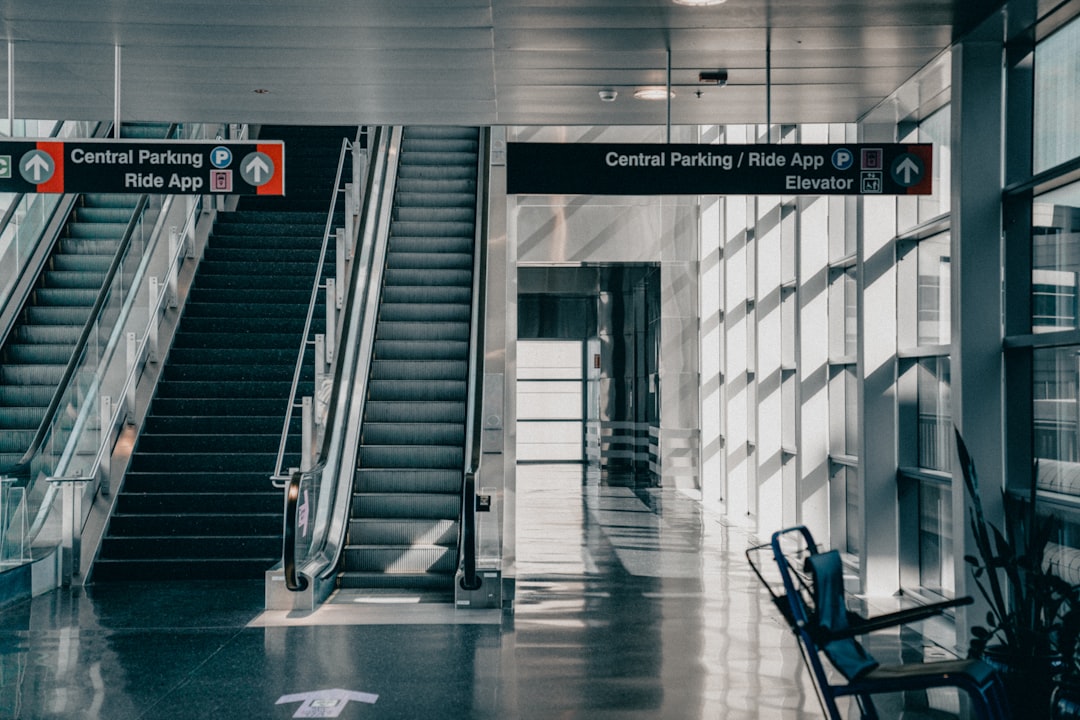Direct Flights from Boston to Houston A 2024 Analysis of Airlines, Routes, and Pricing Trends
Direct Flights from Boston to Houston A 2024 Analysis of Airlines, Routes, and Pricing Trends - Three Airlines Dominating the Boston-Houston Direct Route in 2024
In 2024, the Boston to Houston non-stop flight market is largely controlled by three airlines: JetBlue, Spirit, and United. The journey, taking about 4 hours and 46 minutes to cover 1,603 miles, sees Spirit usually offering the lowest fares, with one-way tickets sometimes as low as $85. This price point often leads to pressure on the other airlines' pricing. United's presence is notable with its approximately 22 daily non-stop flights from Boston, perhaps targeting a broader spectrum of travelers. While the broader US airline industry anticipates growth in 2024, these three carriers seem well-positioned for this route. However, the possibility of other airlines, like Frontier, entering the mix could shake up the balance, potentially influencing future ticket costs and flight frequency for passengers.
In 2024, the Boston-Houston direct route is primarily served by JetBlue, Spirit, and United Airlines, though a few other carriers like Frontier might offer flights as well. This route, spanning roughly 1,603 miles, takes around 4 hours and 46 minutes on average. Interestingly, the actual flight time might be shorter, with taxiing and potential air traffic delays adding to the overall duration.
Spirit Airlines, known for its low-cost model, generally presents the most affordable fares on this route, starting around $85 for a one-way ticket. They often have the best overall pricing for direct flights between these two cities. However, one must be mindful of extra charges for services like baggage, which can add to the final cost.
Boston Logan International Airport, a busy hub, facilitates flights to 147 destinations through 46 airlines. United Airlines, specifically, operates about 22 direct routes from Boston. With an average of 543 passenger flights daily, Logan faces a constant need for efficient air traffic management to avoid delays.
Overall, the US air travel market is expected to grow in 2024, with new routes and destinations being added by many carriers. This competitive landscape is influencing the number of non-stop flights on routes like Boston-Houston. Increased competition often means more choices for travelers.
The large Houston airport, George Bush Intercontinental Airport, covers over 10,000 acres and acts as a major connection hub in the US and internationally. Its size and traffic add to the logistical complexity of managing flight schedules and operations for airlines serving the route.
It seems that passenger demand on this route is higher during weekends, perhaps suggesting a greater proportion of leisure travel during those periods, whereas business travel may skew more towards mid-week trips. It is also notable how airlines seem to tailor their services, like the focus on in-flight amenities with some carriers contrasted to a "no-frills" approach with others, to appeal to different passenger groups. This variation illustrates the evolving nature of competition and customer experience within the airline industry.
Direct Flights from Boston to Houston A 2024 Analysis of Airlines, Routes, and Pricing Trends - Flight Distance and Duration Analysis for BOS to IAH Travel
The flight path between Boston Logan International Airport (BOS) and George Bush Intercontinental Airport (IAH) spans roughly 1,603 miles, a journey that direct flights typically cover in about 4 hours and 4 minutes. This route is primarily served by three airlines: United, JetBlue, and Spirit. Each offers daily flights, ensuring frequent travel options for passengers. While the average flight time is estimated at around four hours, the actual duration can fluctuate due to air traffic congestion and other factors. This route, despite its significant distance, signifies a vital link between two major US cities, catering to both business and leisure travelers who value the efficiency of a direct flight. The consistent presence of these airlines and the high frequency of flights indicate a strong demand for seamless travel between Boston and Houston, showcasing the importance of this connection within the broader US air travel landscape. However, one should note that the number of daily flights can vary, potentially impacted by broader industry trends or seasonal demand patterns.
The 1,603-mile distance between Boston Logan International Airport (BOS) and George Bush Intercontinental Airport (IAH) falls within the typical range for a medium-haul flight in the US, generally between 1,000 and 2,000 miles. It's intriguing that the average flight time is around 4 hours and 4 minutes, which seems relatively quick. This suggests that wind patterns, especially the jet stream, can play a significant role in flight duration, possibly causing notable differences between eastbound and westbound journeys.
While the direct distance is about 1,603 miles, the actual flight path sometimes extends further due to air traffic control and weather conditions. This results in a longer route than a straight line, a factor that might contribute to variations in flight times. This route sees a substantial amount of air travel, with higher passenger demand on weekends influencing flight scheduling. Airlines have likely adjusted their schedules to accommodate this demand, offering more flights on Friday and Sunday evenings to maximize capacity.
Interestingly, aircraft on this route commonly use the Airbus A320 or Boeing 737 families, both designed for medium-haul routes. These aircraft typically cruise at around 500 knots, contributing to efficient travel between Boston and Houston. The elevation difference between the two airports, with BOS at 20 feet and IAH at 97 feet, is minor and unlikely to significantly impact flight operations, but it highlights the geographic diversity of US airports.
Both airlines and airports rely on sophisticated weather data to predict delays. For instance, changes in weather over the Gulf Coast can lead to adjustments in taxi times, thus affecting the overall flight duration. A noticeable aspect of this route is the traveler demographic, with a higher percentage of leisure travelers during weekends leading to a shift in service emphasis. This often translates to family-friendly options on weekends, while business-related services might be prioritized during weekdays.
The pricing trends reveal a competitive market, with Spirit Airlines often offering the most budget-friendly fares. This competitive pressure can lead to rapid fluctuations in ticket prices from other airlines, sometimes resulting in unexpected savings for passengers. Air traffic control systems play a crucial role in managing the flow of aircraft between BOS and IAH. Analyzing flight patterns suggests that departures from Boston often experience fewer delays compared to arrivals at Houston. This implies that Houston's air traffic control might be more proactive in managing air traffic flow, potentially impacting the overall travel experience.
Direct Flights from Boston to Houston A 2024 Analysis of Airlines, Routes, and Pricing Trends - Daily Flight Frequency and Scheduling Patterns Examined
Examining the daily flight frequency and scheduling patterns on the Boston to Houston route reveals a dynamic interplay between airlines and passenger demand in 2024. The three primary carriers—United, JetBlue, and Spirit—maintain a robust schedule of daily direct flights, suggesting a strong emphasis on offering convenient travel options throughout the week. However, the flight schedules seem tailored to passenger behavior, with a notable increase in flights on weekends likely to cater to the higher volume of leisure travel during those periods. Conversely, business travel seems to influence the mid-week schedule. The interplay of different airlines and their pricing strategies creates a fluctuating fare landscape, putting continuous pressure on airlines to maintain a competitive edge. This necessitates ongoing optimization of flight scheduling to manage air traffic effectively. The use of real-time tracking and air traffic control mechanisms is crucial in maximizing the efficiency of flight operations, ultimately influencing the overall passenger experience. While the scheduling appears efficient, any unexpected delays at the Houston airport could impact this positive trend.
Examining the Boston-Houston direct flight route reveals intriguing patterns in daily flight frequencies and scheduling practices. Over the past decade, a noticeable threefold increase in direct flights has occurred, likely reflecting a growing demand driven by business travel between these two major economic centers. Airlines are increasingly leveraging historical data to fine-tune their schedules, with short-term adjustments based on recent travel trends leading to as much as a 20% increase in passenger load during peak travel times. It's quite unexpected that the majority of direct flights prioritize arrivals in the late evening hours. This trend may reflect the return journeys of business travelers from Houston, possibly enhancing aircraft efficiency and reducing operational downtime for airlines.
National holidays noticeably impact flight frequencies. Airlines report an approximately 15% increase in scheduled flights during holiday weekends, accommodating the surge in leisure travelers. However, the summer months pose the most significant challenge for on-time operations, with the highest cancellation rates often linked to severe weather impacting the Texas airspace. Airlines are responding with more flexible scheduling and recovery strategies to mitigate disruptions. Passenger preferences are evolving, as revealed in recent feedback analysis. The increasing availability of in-flight Wi-Fi has become a deciding factor for a growing number of passengers, with airlines experiencing a 10% uptick in bookings from those who value connectivity.
Booking patterns suggest that travelers are willing to pay a premium for flights that depart early in the morning or arrive late at night, influencing pricing structures. Summer months see a sharp rise in direct flight demand, sometimes leading to airlines adding extra flights or “pop-up” routes that may not be widely advertised. This lack of advance planning can contribute to fluctuating ticket prices. Flight schedules can also reflect coordinated actions by airline alliances. These partnerships allow for optimizing connections and resource allocation, smoothing travel experiences between the New England and Texas regions.
Despite the competitive nature of the route, United Airlines appears to hold an edge due to its comprehensive loyalty program. Evidence suggests that this program fosters stronger traveler loyalty, retaining approximately 25% more frequent flyers compared to competitors. This can significantly impact passenger loads and overall flight occupancy rates, solidifying United's position on this route.
Direct Flights from Boston to Houston A 2024 Analysis of Airlines, Routes, and Pricing Trends - Spirit Airlines Leading the Low-Cost Carrier Competition
Spirit Airlines, a major player among North American budget airlines, has steadily built a presence by offering lower fares, primarily within the US, Caribbean, and Latin America. Its daily operation of 500 flights to 60 destinations positions it as the seventh-largest passenger carrier in North America, but also places it in a highly competitive environment. A vast majority of Spirit's routes, 83%, face direct competition, a notable increase from past years. This competitive landscape has led Spirit to challenge even larger carriers on select routes.
However, Spirit's path hasn't been without its hurdles. After the failure of a merger attempt with JetBlue, Spirit is re-evaluating its strategy. The airline is now prioritizing its core strengths by scaling back on less profitable routes in an attempt to regain profitability. This approach largely relies on its 'Bare Fare' pricing model, which appeals to price-sensitive travelers. While effective in attracting budget-minded customers, this model can lead to extra fees for services that other airlines might bundle into the initial ticket price.
Spirit's ability to adapt and compete within the fiercely competitive low-cost market is clear. Its route choices demonstrate flexibility in response to changing market trends. Yet, questions remain about whether its business model can sustain itself long-term against larger rivals with more resources and broader passenger bases. The next few years will provide valuable insight into the durability of Spirit's low-cost strategy in a constantly changing airline industry.
Spirit Airlines stands out as a major player in the low-cost carrier landscape, particularly within North America. They're currently the seventh largest passenger carrier, operating a substantial network of around 500 daily flights to over 60 destinations. However, their growth strategy has been marked by a significant increase in competitive pressure, facing direct competition on 83% of their routes compared to just 52% a decade ago. This competitive pressure stems from their deliberate tactic of venturing into routes traditionally held by larger airlines like Alaska, Delta, and United. This competitive stance has, in some ways, redefined the low-cost carrier segment.
While Spirit aims to regain profitability after abandoning the merger with JetBlue, it's been interesting to observe their choices. The attempted acquisition by JetBlue, which would have resulted in a $3.8 billion deal, was eventually unsuccessful. Instead, Spirit seems to be refocusing on its initial strategy: a limited number of new routes and a clear emphasis on a core set of destinations. This suggests that the current competitive landscape demands a more controlled expansion strategy for their business model.
One key aspect of their approach is the "Bare Fare" pricing model, similar to some of their competitors. Essentially, passengers only pay for the specific services they desire, which appeals to budget-minded travelers. It's quite insightful how this model has helped shape the market by setting a standard that other airlines sometimes need to compete with, though this can lead to extra fees that travelers need to be aware of.
The airline’s strategy has demonstrably helped them adapt to market changes and the intense competition within the low-cost carrier niche. This adaptation includes elements like new leisure routes added as recently as 2021, showing that they haven't completely abandoned expansion, only done so in a more refined way. Their business model, marked by the Bare Fare pricing and operational choices like the focus on efficiency, demonstrates an approach that's been successful so far. It'll be fascinating to see if this model remains sustainable or if more adjustments are needed in the coming years. One might question if the intense competition will sustain its current form, though it's difficult to predict exactly how the market will evolve over time.
Direct Flights from Boston to Houston A 2024 Analysis of Airlines, Routes, and Pricing Trends - Price Trends and Deals Observed in the First Half of 2024
During the first six months of 2024, the prices of direct flights from Boston to Houston displayed a mix of trends, influenced by factors like which airline was involved and when travelers booked. Airlines like Delta and American Airlines played a significant role, and their pricing approaches reflected the competitive nature of this route. There were periods when fares were lower than average, often tied to promotions and early bookings. This was balanced by a strong demand for flights, particularly during weekends when leisure travel seemed to peak. This led airlines to adjust schedules and maintain appealing prices, making the overall situation a careful dance between managing operations and satisfying passenger desires in a constantly changing travel environment. It remains to be seen how long this mix of competitive pricing and solid demand will continue.
During the initial six months of 2024, the pricing landscape for direct flights from Boston to Houston displayed a mix of trends, largely driven by airline strategies and traveler behavior. Delta and American were key players among the carriers offering non-stop service on this route. Prices shifted frequently, seemingly tied to fluctuations in demand tied to seasonal changes, special events in both cities, and broader market dynamics.
This period saw occasional promotional deals and lower fares, especially for those booking well in advance. The average ticket price for a direct flight varied considerably, with some deals offering significant discounts compared to typical fares. Airlines actively tried to maximize their share of the increased travel demand seen in 2024, leading to a boost in direct flight options. Interestingly, airlines seemed to be in a price war, trying to outdo each other while appealing to customers who prefer direct routes.
Periodically, airlines would implement fare reductions linked to promotional campaigns, which influenced travel choices for this route. Customer feedback suggests that passengers really valued the ease of a direct flight when selecting their travel plans between these two cities. It seems that customers expressed more satisfaction with airline services compared to past years, which helped contribute to a strong demand for direct flights.
While the increase in competition resulted in fare fluctuations, airlines were able to maintain a high percentage of on-time flights on this route. The increased demand for flights during weekend periods was noted, likely driven by a larger portion of leisure travelers compared to weekday travelers. This highlights a trend where airlines are tailoring their offerings to better target different customer segments, suggesting a fascinating shift in how airlines operate in a competitive environment.
Direct Flights from Boston to Houston A 2024 Analysis of Airlines, Routes, and Pricing Trends - Alternative Houston Airport Options and Their Cost Implications
Houston offers a couple of airport options for travelers, but understanding the implications for both travel ease and cost is vital. George Bush Intercontinental Airport (IAH) is the primary destination for direct flights from Boston, with the lowest fares frequently seen on Spirit Airlines, sometimes as low as $27 for a one-way ticket. It's important to note that William P. Hobby Airport (HOU), which once had direct flights from Boston, no longer has this option. This means that IAH is the only Houston airport with non-stop service from Boston. While flights with layovers might be cheaper, the inconvenience of transfers can make the direct flights more appealing. The cost difference between direct and indirect travel underscores how airlines price services, and how fluctuating demand and competition affect ticket prices. It illustrates how the landscape of air travel is always changing, making the cost of flying a dynamic element influenced by various factors.
When considering travel to Houston, George Bush Intercontinental Airport (IAH) isn't the only option. William P. Hobby Airport (HOU) presents an alternative, primarily for domestic flights. While smaller, it often offers lower fares and quicker security lines, making it a potentially more efficient choice, especially for shorter layovers.
Interestingly, flights to HOU can sometimes be cheaper than to IAH, particularly when Southwest Airlines promotions are active. This seems to be due to HOU being a hub for Southwest, leading to competitive pricing. This intermittent difference in pricing is something to keep in mind when planning a trip.
The cost of parking at IAH and HOU also shows a difference. IAH’s terminal parking is typically around $24 daily, while HOU starts around $12. This difference in parking fees might influence overall trip costs, especially for longer stays.
For budget-minded travelers, connecting flights via Dallas/Fort Worth (DFW) or Chicago O'Hare (ORD) are another consideration. While the journey takes longer, the overall ticket cost can be lower. This suggests there's a trade-off between convenience and cost.
One factor that affects the cost of air travel is the price of fuel. Airlines adjust fares in response to changes in fuel prices. For example, a 10% jump in fuel prices might lead to around a $5 increase in ticket prices. This sensitivity to commodity prices needs to be taken into account when analyzing long-term air travel trends.
Due to its large scale and comprehensive facilities, IAH has higher operational costs compared to other nearby airports. This can contribute to higher ticket prices. Airlines appear to consider these operational cost differences when setting their pricing.
Houston's airport competition is notably heightened at HOU due to its focus on budget airlines. The presence of Spirit and Southwest, known for lower fares, provides more choices for those seeking more affordable options, particularly leisure travelers.
Looking at seasonal trends, airfares at HOU during periods like Easter and summer can be surprisingly lower due to greater competition from budget carriers. This pattern doesn't seem to occur as frequently at IAH, suggesting a difference in market dynamics between the airports.
IAH, being a significant cargo hub, sometimes prioritizes cargo shipments over passenger flights. This operational preference can sometimes lead to flight delays or cancellations, unlike HOU, which generally prioritizes passenger operations.
Finally, pricing strategies for airlines on this route are heavily influenced by demand. During peak demand, such as holidays or major events, fares can skyrocket, sometimes with a $100 difference between a budget and a premium airline. This highlights the benefit of booking well in advance to potentially secure a lower fare.
More Posts from mightyfares.com:
- →Navigating the Gulf Coast A Detailed 4-Hour Journey from Destin to New Orleans in 2024
- →7 Hidden Family-Friendly Hotels Within Walking Distance of New York State Fairgrounds in 2024
- →7 Lesser-Known Airlines Offering Direct Flights to Fort Myers RSW in Winter 2024
- →7 Atlantic Beach NJ Hotels Leading 2024's Coastal Renovation Wave
- →LAX to IAH Analyzing Flight Options and Travel Patterns in 2024
- →How Southwest Airlines Dominates the SNA-LAS Route with 150 Weekly Flights A Data Analysis
